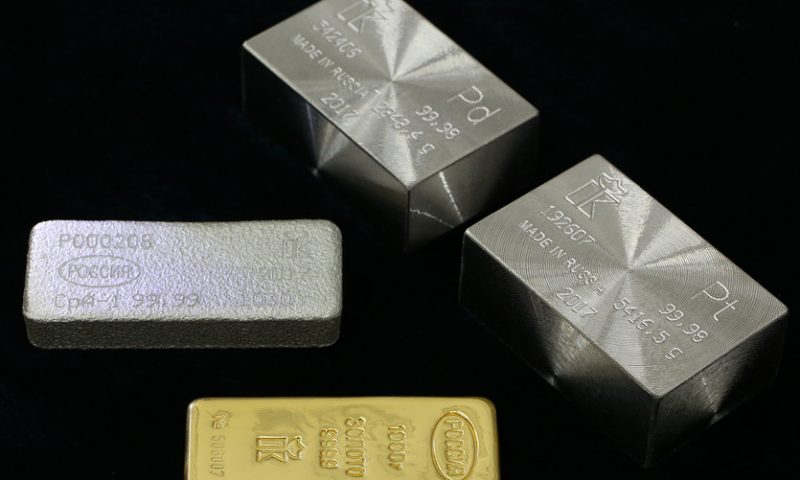Gold prices suffer a weekly loss of 0.3%
Gold futures were unchanged on Friday, ending the week with a loss, after data showing November gains in the U.S. manufacturing and services indexes and a rise in consumer sentiment buoyed benchmark stock indexes, dulling gold’s haven appeal.
The IHS Markit said its flash manufacturing purchasing managers index rose to 52.2 in November from 51.3 in October—the fastest rate since April. The flash services purchasing managers index in November also rose to 51.6 from 50.6, for the quickest expansion since July.
Separately, the final reading of the University of Michigan’s U.S. consumer-sentiment index in November was 96.8, above the October level of 95.5. Economists surveyed by MarketWatch had forecast an unchanged reading of 95.7.
December gold GCZ19, -0.14% settled unchanged on Friday, at $1,463.60 an ounce on Comex, after trading as high as $1,473.40 during the session. It settled Thursday at its lowest since Nov. 13, according to FactSet data. December silver SIZ19, -0.24% shed 6.5 cents, or 0.4%, to end at $17 an ounce, after slipping 0.3% a day ago.
For the week, the yellow metal saw a 0.3% weekly loss, while silver booked a weekly rise of 0.3%.
Gold hung onto a gain Friday, albeit a modest one, following weak economic data from Europe and against a backdrop of trade worries.
The yellow metal is rising as “Europe stagnates, trade uncertainty persists and as the Hong Kong situation seems to be coming to a head,” wrote Edward Moya. senior market analyst at Oanda, in a daily research note.
IHS Markit’s purchasing managers indexes for the eurozone area pointed to slowdown in economic growth, even as German data showed some signs of life. Meanwhile, the U.K.’s economic performance was the worst since July 2016, with manufacturing and services PMI both coming in below 50, a level that represents a dividing line between contraction and expansion.
On top of that, Britain faces a general election on December 12 as it attempts to exit from the European Union, which comes as Hong Kong is set to have District Council elections on Nov. 24, amid violent protests in the semiautonomous region that have played out for months.
Those geopolitical events and fitful progress toward a U.S.-China trade agreement have supported the long-term bull case for bullion, even if it has retreated from a psychologically significant level at $1,500 in recent trade, commodity experts say.
On Friday, Trump told “Fox & Friends” in a phone interview that “we have a very good chance to make deal.” Meanwhile, China’s President Xi Jinping said Beijing wants to work for a trade deal, but is not afraid to “fight back” to protect its own interests, according to the Associated Press.
“Any signs of trade tensions resurfacing should rekindle risk aversion consequently boosting appetite for safe-haven gold,” said Lukman Otunuga, senior research analyst at FXTM. “In the near term, the precious metal could remain choppy as conflicting signals and messages over trade developments foster confusion.”
Among other metals, December copper HGZ19, -0.08% rose 0.9% to $2.648 a pound, settling 0.4% higher for the week. January platinum PLF20, +0.11% fell 2.7% to $892.60 an ounce—down 0.2% for the week, while December palladium PAZ19, +0.03% added 0.7% to $1,743.40 an ounce, to score a weekly rise of 3.6%.
The SPDR Gold Shares exchange-traded fund GLD, -0.19% was up 0.2% in Friday dealings, on track for a weekly rise of 0.2%.

